#89 in Vietnam
Bánh Cốm: Basic Information
Pronunciation
Alternative Name(s)
Dish Type
Course
Mealtime
Popular Variations
Bánh Cốm: Ingredients and Preparation
Main Ingredients
Main Cooking Method
Preparation Process
Bánh Cốm: A Deep Dive
Cultural Significance
Taste
Texture
Aroma
Color
Serving Style
Serving Temperature
Accompaniment
Occasions
Seasons
Special Diets
Calories
Popularity
Popular Similar Dishes
- Bánh Giầy
- Bánh Ít Trần
Popular Dining Area
Bánh cốm is a traditional Vietnamese sweet treat made from young, green glutinous rice (called cốm) and mung beans. It is famous in Hanoi, especially those from Hang Than.
The green sticky rice is typically pounded until it becomes a fine, tender paste, and this forms the outer layer of bánh cốm.
Inside, there is a filling made of mung bean paste, sometimes including shredded coconut or lotus seed jam.
Generally, bánh cốm is sweet and slightly chewy, with a fresh and fragrant aroma. It usually has a vibrant green color and is in small, flat squares or rectangles.
It’s a popular gift for special occasions, like weddings in Vietnam. It is also a popular treat during the Mid-Autumn Festival since cốm is a seasonal food associated with this season.
Besides being a sweet snack, bánh cốm is also an ideal dessert to enjoy with tea.
While home-making bánh cốm is an option and will be explored later with step-by-step guidance, purchasing pre-made ones is a convenient alternative, particularly in Hanoi.
Later, let’s check some good and bad sides of bánh cốm, refer to frequently asked questions from others, and find out dishes akin to this Vietnamese favorite.
Key Points
Bánh Cốm Images
How To Prepare Bánh Cốm at Home?
Preparing bánh cốm at home involves a detailed process, but here’s a general guide with three main steps.
Step 1: Preparing the Green Sticky Rice
Use high-quality green sticky rice and marinate it with lotus jam and grated coconut. Stir-fry the marinated cốm on a hot pan with caster sugar for about two hours until condensed but retaining the green color.
Step 2: Preparing the Bean Paste
Steam the green beans until cooked, then mash them finely. Sweeten the bean paste by cooking it on low heat with a bit of sugar. Then, add shredded coconut or lotus seed jam.
Step 3: Assembling the Cake
Divide the green bean paste into small portions. Wrap each portion of bean paste with the prepared green sticky rice.
Plus, stir-frying the green sticky rice is a crucial stage. The cake may become too soft or overcooked if the firepower used or stirring skill is not appropriate. In Vietnam, locals normally wrap the final product in a plastic wrapper and put it in a small box.
In case you want to buy them from stores, the next section will suggest some good places to get these treats in Hanoi.
Where To Buy Bánh Cốm in Hanoi, Vietnam?
For those looking to savor the authentic taste of bánh cốm in Hanoi, Vietnam, here are four reputable stores in the city where you can buy and try this green rice cake.
In Hanoi
Bánh Cốm Nguyên Ninh
Address: 12 Hang Than, Nguyen Trung Truc Street, Ba Dinh District, Hanoi
Bánh Cốm Bảo Minh
Address: 11 Hang Than, Nguyen Trung Truc Street, Ba Dinh District, Hanoi
Bánh Cốm Hà Nội Ngọc Ninh
Address: 50 Hang Than, Nguyen Trung Truc Street, Ba Dinh District, Hanoi
Bánh Cốm Nguyên Hương
Address: 60 Hang Than, Ba Dinh District, Hanoi
Continuing on, I’ll offer some good aspects and drawbacks of eating it.
Pros and Cons of Eating Bánh Cốm
Explore bánh cốm advantages and disadvantages through the table below.
Pros
Cons
Following this, you’ll examine usual questions that arise about this Hanoi-based green rice cake.



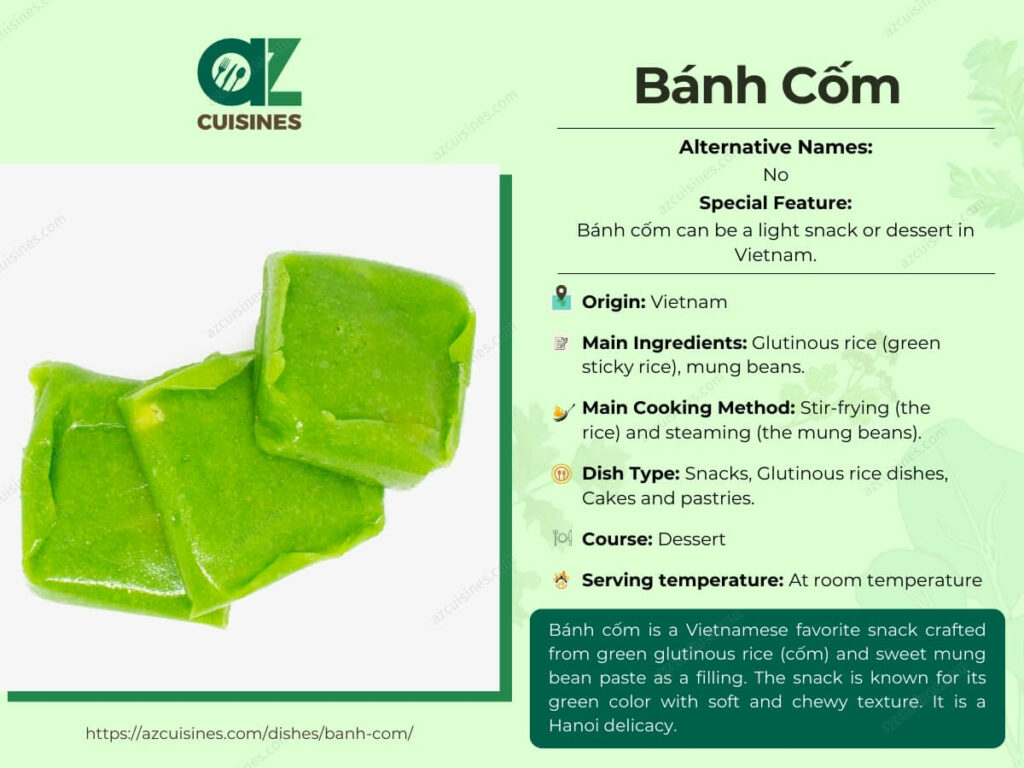
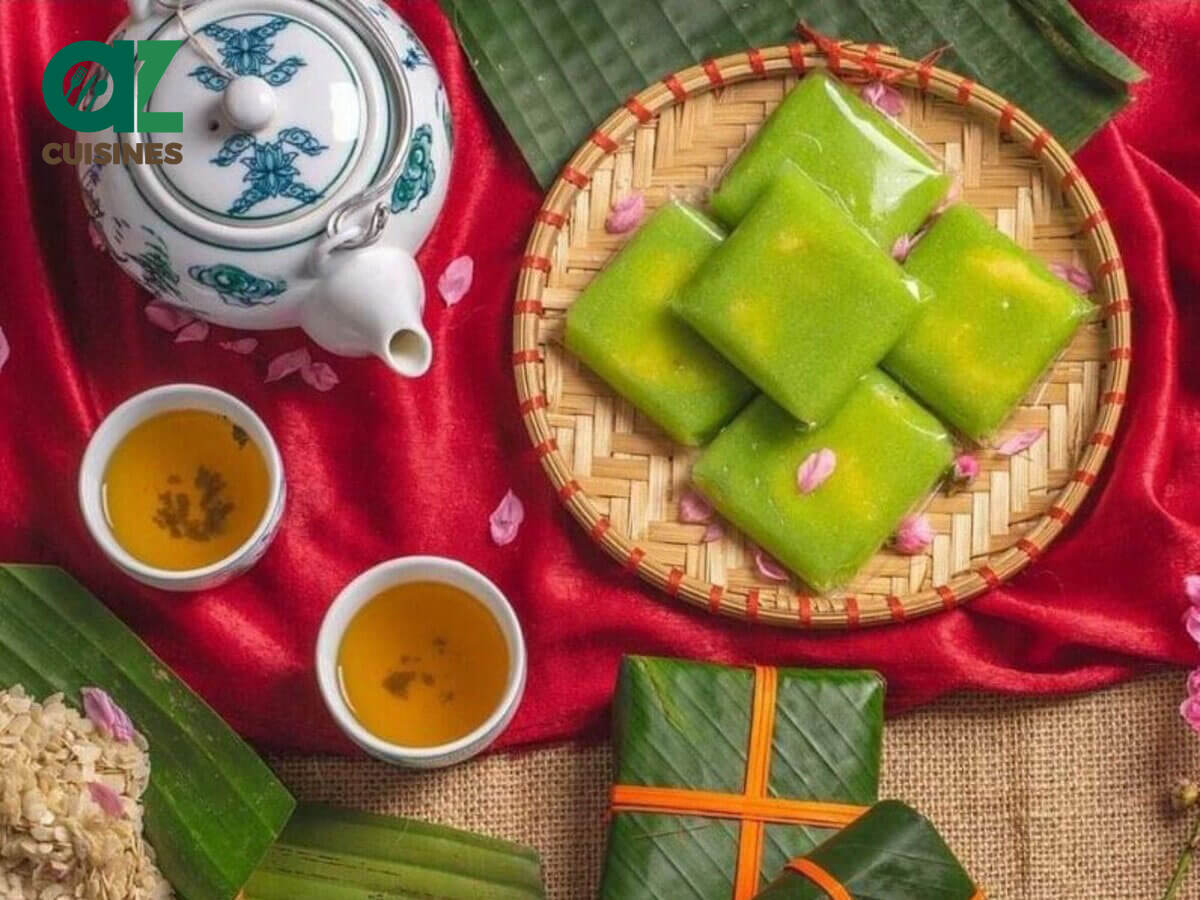
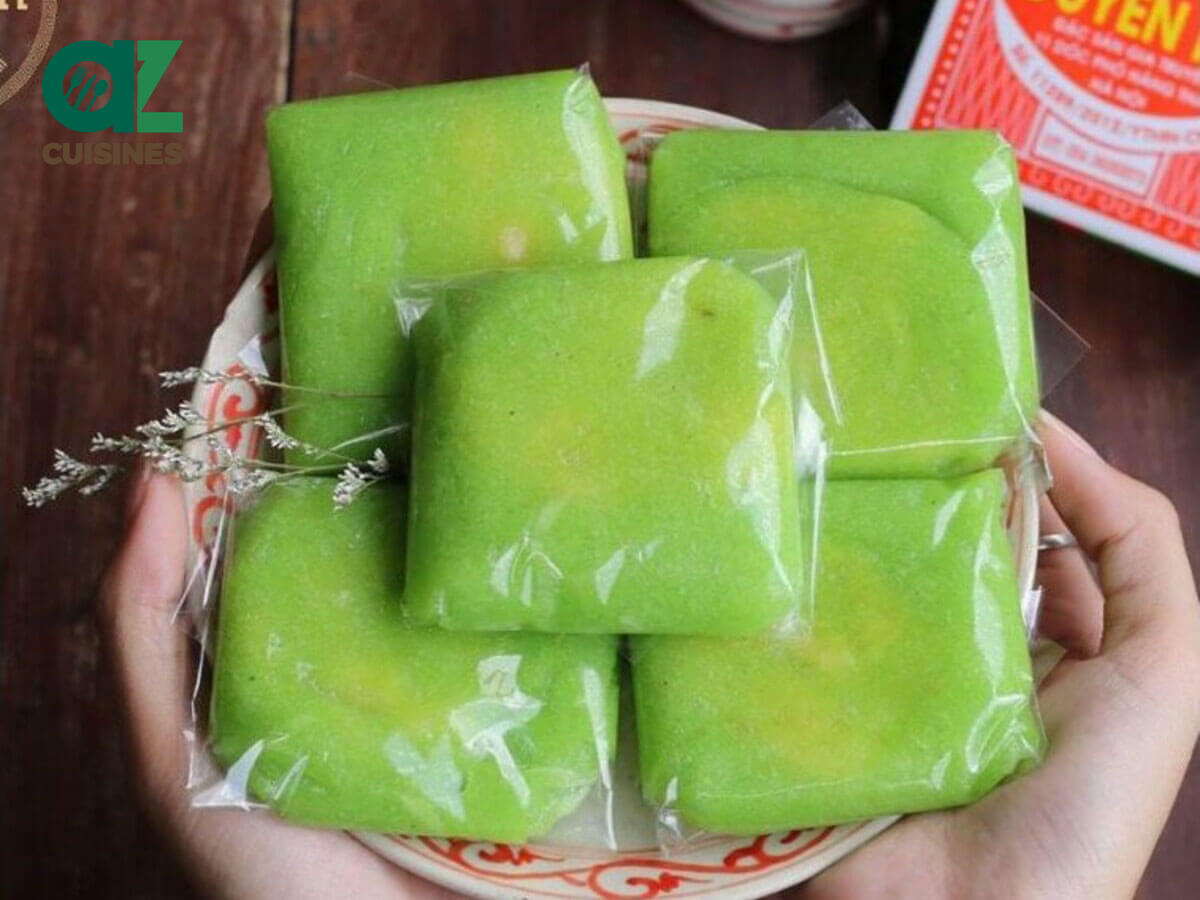
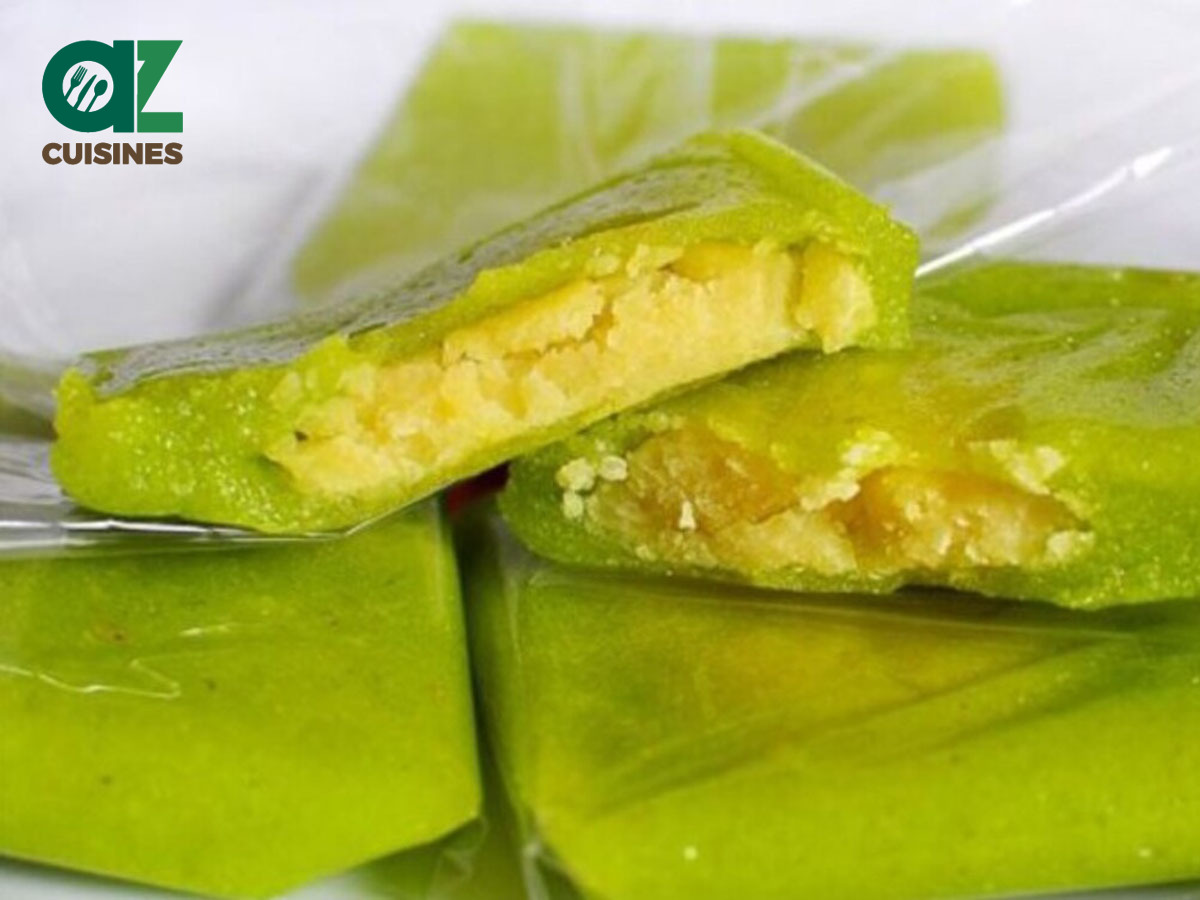
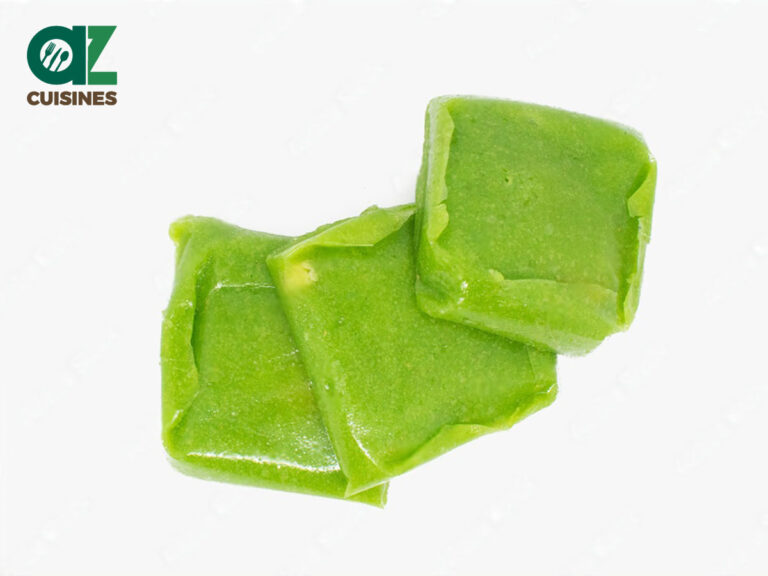
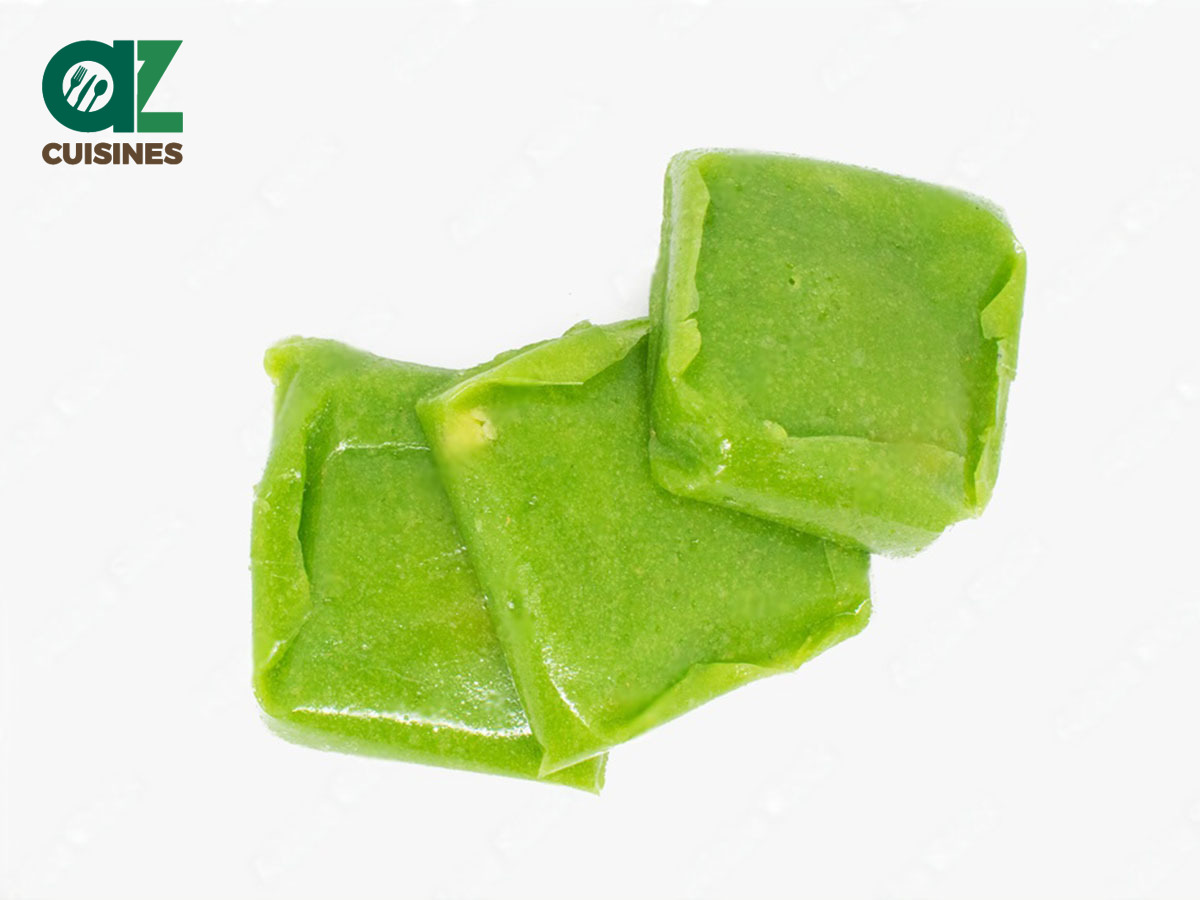
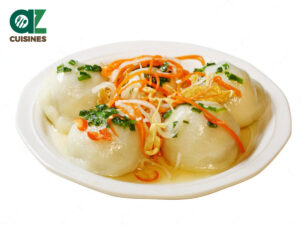
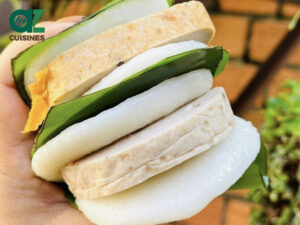
Truc Tran (Kris)
Senior Food Editor
Expertise
Home Cooking, Meal Planning, Recipe Development, Baking and Pastry, Food Editor, Cooking-video Maker, Vietnamese Food Evaluation Expert
Education
Truc Tran (Kris), an experienced food writer and editor, is great at exploring and describing global cuisines, from simple street food to fancy dining. In her writing, she skillfully mixes different flavors, cooking methods, and culinary traditions, showing the unique character of various cultures through their food and drinks. On azcuisines.com, Kris highlights her knowledge, especially in Asian cuisine and worldwide traditional dishes.